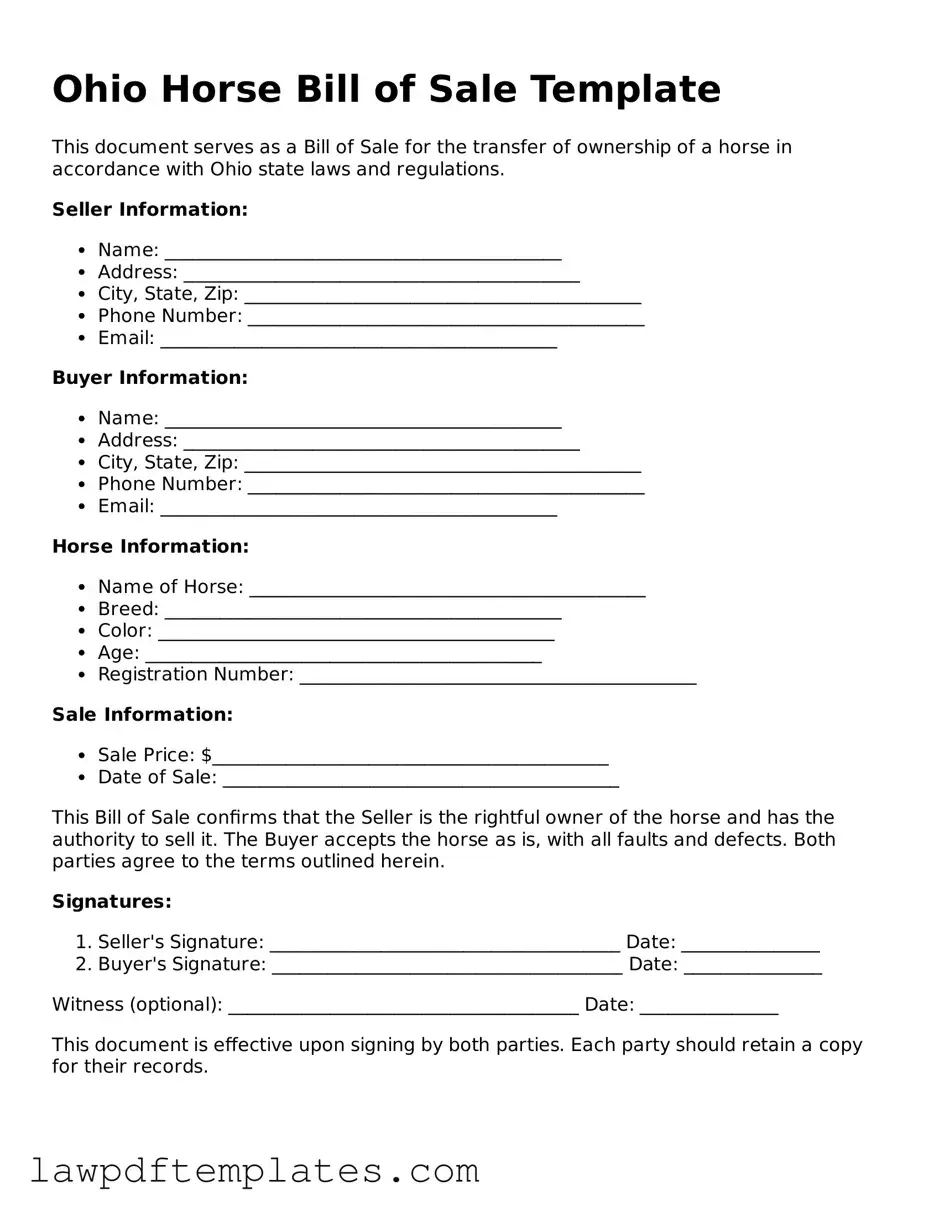Ohio Horse Bill of Sale Template
This document serves as a Bill of Sale for the transfer of ownership of a horse in accordance with Ohio state laws and regulations.
Seller Information:
- Name: ___________________________________________
- Address: ___________________________________________
- City, State, Zip: ___________________________________________
- Phone Number: ___________________________________________
- Email: ___________________________________________
Buyer Information:
- Name: ___________________________________________
- Address: ___________________________________________
- City, State, Zip: ___________________________________________
- Phone Number: ___________________________________________
- Email: ___________________________________________
Horse Information:
- Name of Horse: ___________________________________________
- Breed: ___________________________________________
- Color: ___________________________________________
- Age: ___________________________________________
- Registration Number: ___________________________________________
Sale Information:
- Sale Price: $___________________________________________
- Date of Sale: ___________________________________________
This Bill of Sale confirms that the Seller is the rightful owner of the horse and has the authority to sell it. The Buyer accepts the horse as is, with all faults and defects. Both parties agree to the terms outlined herein.
Signatures:
- Seller's Signature: ______________________________________ Date: _______________
- Buyer's Signature: ______________________________________ Date: _______________
Witness (optional): ______________________________________ Date: _______________
This document is effective upon signing by both parties. Each party should retain a copy for their records.
